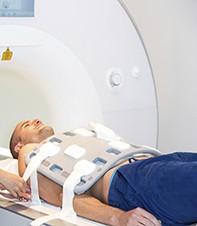Peer Reviewed
Perspectives
The role of cardiac MRI in clinical practice
Abstract
Cardiac MRI has emerged as an established tool for the investigation of many cardiovascular disorders, with a growing number of clinical applications. These include assessment of patients with cardiomyopathy or aortic or congenital heart disease, where it yields prognostic data that are likely to improve clinical outcomes.
Key Points
- Cardiac MRI (CMR) provides high-resolution dynamic imaging of the beating heart and is the reference standard for assessing ventricular systolic function.
- CMR is the only imaging modality that can identify myocardial fibrosis and inflammation, which aids in diagnosis and prognostication for patients with cardiomyopathy.
- CMR is widely used for the assessment of aortic and congenital heart disease, where anatomical imaging and quantification of blood flow help guide potential interventions.
- Access to CMR is limited to specialised centres and currently Medicare rebates are available only for investigation of congenital heart disease, aortic disease and cardiac tumours.
Picture credit: © Ikonoklast_Fotografie/iStockPhoto. Model used for illustrative purposes only.
Purchase the PDF version of this article
Already a subscriber? Login here.

